Day 1 :
Keynote Forum
Ernest Berkman
Ernest Berkman, Emerald Exploration Consultants, Inc, Canada
Keynote: Magnetotelluric investigation of the Colorado front range thrust fault between Castle Rock and Colorado Springs, Colorado
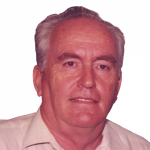
Biography:
Ernest Berkman graduated from the Colorado School of Mines, Geophysical Engineer, 1958. He worked for Mobil Oil for 20 years and then started EMEX. At EMEX, his experience includes prospect analysis and regional geological/geophysical studies including reflection, gravity, magnetics, magnetotellurics (MT), refraction analysis, in North America and worldwide; plus a lot of shallow seismic for coal mine development and site characterization. Interpretation background includes site characterization, and technical writing, modeling, quality control, project, and team management, industrial teaching, and mentoring. He has been a member of the SEG since 1955. His 30 geological and geophysical papers are available at https://www.researchgate.net/profile/Ernest_Berkman.
Abstract:
Magnetotelluric investigation of the Colorado front range thrust fault between Castle Rock and Colorado Springs, Colorado A magnetotelluric (MT) survey was performed over the Front Range (FR) thrust fault of Colorado between Colorado Springs and Denver by Argonaut Enterprises Inc. for Emerald Exploration Consultants Inc. in 1987. Data was recorded at 20 sites with one site positioned at the Abercrombie State #1 well to provide a resistivity calibration; all other sites were positioned on the FR. Geologists agree that the Precambrian rocks of the FR have been juxtaposed against younger sedimentary rocks along a west dipping fault complex, however the attitude at depth is speculative. The objective of this survey was to determine the frontal fault configuration. The changes associated with the MT data have been interpreted to represent three primary rock units: a low resistivity 5-30 ohm.m unit which correlates with Cretaceous rocks; a mid-resistivity 50-250 ohm.m unit which correlates with Mesozoic and Paleozoic strata; and a high resistivity 500-2,000 ohm.m unit which correlates with Precambrian rocks observed on the surface. Mesozoic and Paleozoic strata have been interpreted to exist in a narrow zone beneath a high angle FR. Except for one site no measurable thickness of low resistivity Cretaceous rocks is present. The interpretation is based upon model studies which have shown that the presence of 5-10 ohm.m Cretaceous rocks would produce a more pronounced low resistivity anomaly than is observed. The models utilized resistivity values of Cretaceous, Mesozoic and Paleozoic sediments which were obtained from wells and prior work. The angle of the FR interpreted from the MT data is relatively high.
Keynote Forum
Barry E DiGregorio
Barry E DiGregorio, University of Buckingham, England
Keynote: Ichnological evidence for bioturbation in an ancient lake at Vera Rubin Ridge, Gale Crater, Mars
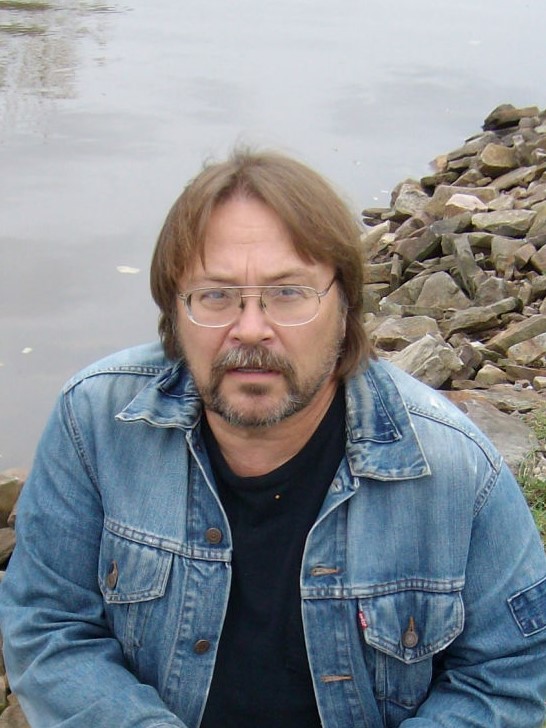
Biography:
Barry E DiGregorio is the founder and director of the International Committee Against Mars Sample Return (ICAMSR), which urges the scientific and environmental communities to consider avoiding the return of Martian samples directly to Earth. He is a research associate for the Buckingham Centre for Astrobiology in the UK and a professional science writer. He is also the author of the book "Mars: The Living Planet,” a 1997 re-examination of the Viking biology results.
Abstract:
Ichnological evidence for bioturbation in an ancient lake at Vera Rubin Ridge, Gale Crater, Mars While most of the focus for the search for life on Mars has remained microbial in context, little real consideration has been given to the idea that Mars may have had conditions suitable for life before the Earth and that life on Mars may have evolved to the multicellular level in its distant past. Although not designed as a life detection mission, NASA’s Curiosity rover has a suite of cameras and instruments that could potentially reveal the presence of macrofossils. On sol 1922 of Curiosity’s mission in Gale Crater, its microscopic imager (MAHLI) camera returned images to Earth of enigmatic dark toned features on a rock called Haroldswick located near the top edge of Vera Rubin Ridge, once the site of an ancient freshwater lake in Gale Crater. Remarkably the Haroldswick rock and dark toned features are part of at least five rocks in close proximity to each other. A variety of dark shapes resembling millimeter-sized rice and bean-shaped objects pepper the outside of their host rocks. The host rocks on Vera Rubin Ridge where these features were found appears to be a succession of the Murray formation that the Curiosity rover has been driving through for 300 vertical meters over the last two years and 9 kilometers . It has a composition of SiO2 around 50, total iron (FeOtot) around 19 wt. %, Al2O3 around 11 wt. %, MgO around 5 wt %, low Ca, and moderately high alkalis (several wt. % each for Na2O and K2O). Haroldswick and its peculiar elongated tube-like features are the first of their kind observed on Mars. The Curiosity rover team refers to the dark features as sticks or crystals. However, morphologically they have some characteristics resembling terrestrial trace fossil burrows. The rover team contends the shapes are characteristic of gypsum crystals that form when salts become concentrated in water, such as in an evaporating lake. Unfortunately, according to the rover team none of the instruments onboard curiosity including Chemcam and the APXS were able to obtain any usable data on these features before deciding to move the rover to its next target site meters away.
Keynote Forum
Habibullo I Abdussamatov
Habibullo I Abdussamatov, Pulkovo observatory of the RAS, Russia
Keynote: Cosmic rays and clouds variations effect on the climate is insignificantly

Biography:
Habibullo I Abdussamatov is the Head of the Space Research Laboratory at the Pulkovo Observatory and head of the Russian-Ukrainian project Astrometria on the Russian Segment of the International Space Station. He holds two patents for scientific inventions and is the author of more than 160 scientific publications
Abstract:
Cosmic rays and clouds variations effect on the climate is insignificantly It is believed that an increase in the area of the cloud cover in the lower atmosphere of the Earth, presumably caused by grows of the galactic cosmic rays flux in the period of the Grand minimum of solar activity, leads to an increase the reflected portion of the TSI back into space, and by that, to a cooling of the climate down to the Little Ice Age. However, without any reason, this hypothesis totally ignores the influence of the quasi-bicentennial variation of TSI of some ~0.4% and all the changes in the physical processes in the atmosphere, which are due to by growth of the cloud cover. Also at all is not taken into account the reverse aspect of the simultaneous increase in the reflection of the thermal radiation of the Earth's surface and the solar radiation reflected from it by due to the increase of the cloud cover area. Now suppose that the area of the cloud cover of the Earth's surface has increased by 2%. An estimate of the grows cloud cover in the lower atmosphere by 2% leads:
- to a decrease of the energy budget of the Earth Eo on -0.02•79 Wm-2 = –1.58 Wm-2;
- to an increase of Eo on +0.02•40 Wm-2 = +0.8 Wm-2;
- to an increase of Eo on +0.02•23.5 Wm-2 = +0.47 Wm-2;
- to an increase of Eo (the greenhouse effect ) on +x.xx Wm-2;
- to a decrease of Eo (emitted by clouds into space) on -0.02•30 Wm-2 = -0.6 Wm-2;
- to an increase of Eo (emitted by clouds to surface) on +0.02•30 Wm-2 = +0.6 Wm-2.
New E1 ≈ Eo - 1.58 Wm-2 + 0.8 Wm-2 + 0.47 Wm-2 + x.xx Wm-2 - 0.6 Wm-2 + 0.6 Wm-2.
Thus, E1 – Eo ≈ 0 or maybe E1 – Eo >0, what can lead to warming. An inverse aspect of simultaneously an increase in the reflection of the thermal radiation of the Earth surface and of the solar radiation reflected from it, as well as the significant amplification of the greenhouse effect practically compensates of this cooling by means of accumulation of energy. The impact of an increase in the area of the cloud cover, presumably caused by the growth of the cosmic rays flux, on climate is practically absent.
Keynote Forum
John Faundeen
John Faundeen, EROS Center, USA
Keynote: The creation of a science data lifecycle model: The U.S geological survey approach
Time : 13:30-14:15
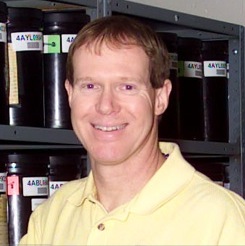
Biography:
With a B.A. and M.S. in Geography, John Faundeen has served as the Archivist at the U.S. Geological Survey’s Earth Resources Observations and Science Center since 2001. His role involves policy, oversight, and guidance for the science records maintained. John primarily focuses on preservation and appraisal functions. ORCiD
Abstract:
The creation of a science data lifecycle model: the u.s. geological survey approach This presentation describes the process the U.S. Geological Survey (USGS) used to create a science data lifecycle model. The working group focused on developing a model that would accurately describe the various steps data takes as it progresses through the lifecycle. Once the model was developed, it was used as a foundation from which to derive far-reaching data management policies addressing U.S. government mandates. The model was extensively reviewed internally, which helped secure corporate buy-in and the implementation was conducted both from a top-down, senior management and bottom-up grassroots approach. Benefits from the model creation will be detailed along with an explanation of the intermediate steps employed. A summary will tie the steps taken and outcomes obtained from investing in the development of a model that both depicts how a science agency currently operates, as well as how that agency could improve its functions for long-term management of science data.
Keynote Forum
Habibullo I Abdussamatov
Habibullo I Abdussamatov, Pulkovo Observatory of the RAS, Russia
Keynote: Remote sensing of the earth from the surface of the moon on monitoring energy budget and climate
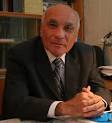
Biography:
Habibullo I Abdussamatovis the Head of the Space Research Laboratory at the Pulkovo Observatory and head of the Russian-Ukrainian project Astrometria on the Russian Segment of the International Space Station. He holds two patents for scientific inventions and is the author of more than 160 scientific publications
Abstract:
Remote sensing of the earth from the surface of the moon on monitoring energy budget and climate We have developed a very important special space project “Lunar Optical Observatory” (LOO) (http://www.gaoran.ru/russian/project/lunar_observatory.pdf) on monitoring of the Earth's energy budget and climate. LOO is necessary for the long-term investigation of the deviation an average annual energy budget of the planet from the equilibrium state and of physical reasons for the climate changes. LOO is a system of two identical special optical telescopes-robots with the diameter of the primary mirror ~300 mm with visor (SOTR-300V) operating successively in the automatic mode on a single program of Earth observation as a single telescope. Telescopes SOTR-300V installs along the narrow latitude of the equatorial zone of the Moon’s surface on two opposite edges relative to its visible center at points at a distance 9.1°±0.1° respectively from the eastern and western edges. Comprehensive measurements variations of reflected and scattered by the Earth of the portion TSI in all directions in the wavelength range Δλ=0.2-4μm, the thermal radiation of the Earth in ranges Δλ=4-50μm and the atmospheric transparency windows Δλ=8-13μm; as well as of the remote sensing of the Earth from surface of the Moon (RSM) in 10 narrow predetermined ranges of the spectrum are carried out consecutively by two SOTR-300V in during no less 94% lunar day continuously only at night in places of their installation. The system two telescopes SOTR-300V provides the most reliable high-precision data of global climate parameters, as well as monitoring of the surface state, clouds, vegetation, cryosphere, the concentration of aerosols and ozone around the globe. SOTR-300V will use a microbolometric CCD for a comprehensive measurement of the reflected and scattered by the Earth of the TSI in all directions and the thermal radiation of the Earth. The average annual values of the Bond albedo and the Earth’s own thermal radiation determined by the Lunar Optical Observatory, and on their basis the deviations of the average annual energy budget of the planet from the equilibrium state will be practically an order of magnitude more accurate than those determined by any orbital spacecraft. LOO for the first time during a significantly superior 11-year cycle of the Sun will provide the most important missing precision global climate data that cannot be obtained by any other cosmic methods of their direct measurements.
Keynote Forum
Wenli Chen
Wenli Chen, Huazhong Agricultural University, China
Keynote: Soil particles of different sizes impact the resistance of nitrite oxidizers to diverse fertilization regimes
Time : 14:15-15:00

Biography:
Wenli Chen has completed her PhD in 1994 from Huazhong Agricultural University. She has her expertise in Soil Aggregation on the Stability and Function of Microbial Community, and Chemical Behavior of Heavy Metals at the Interface of Soil Mineral-Organic Matter Interactions. She has published more than 60 papers in Soil Biology and Biochemistry, Science of the Total Environment, European Journal of Soil Science, Chemical Geology, Geomicrobiology J et al. and serves as an editorial board member of Frontier in Microbiology.
Abstract:
Soil particles of different sizes impact the resistance of nitrite oxidizers to diverse fertilization regimes Nitrite-oxidizing bacteria (NOB) is of great importance in nitrogen-cycle of agricultural ecosystems, and yet their resistances to environmental disturbances under microhabitats remain unclear. In this study, we took samples from the field that was used for a long-term fertilization experiment, including control without fertilizer (CK), chemical fertilization (NPK), NPK and straw (NPKS), NPKS and pig (NPKSP) or cow manure (NPKSC) treatments, to understand how disturbed environments impact the abundance and potential nitrite oxidation activity (PNO) of nitrite oxidizers inhabiting different microenvironment indicated by different sizes of soil particles. PNO was generally increased in the NPK treatment and shown to be highest in the microaggregate, followed by in macroaggregates and silt+clay fractions in all plots. Remarkable variations of the PNO resistance across aggregate size fractions were observed in the NPK(S) plots, with the highest resistant levels in the macroaggregates and lowest in silt+clay fractions. The resistance index of Nitrobacter-like NOB abundance was significantly decreased in silt+clay fractions by the manure fertilization and kept stable in other fractions. The resistances of Nitrospira-like NOB remain unchanged in most cases. We found a significant positive correlation between PNO and nitrite oxidizers abundances, while no remarkable correlation was observed between the resistances of PNO and those of the nitrite oxidizer abundances. Multiple linear regressions showed that Nitrobacter abundance and its resistance have a great contribution to explaining PNO, while Nitrospira was not. NOB abundances resistance indexes were associated with both the soil properties and the abundances themselves. This indicated the functional potential of NOB would be less resistant to environmental disturbances than the population itself because the population resistance was also correlated with the size of itself. The macroaggregate+microaggregate fractions may provide a higher protective role against environmental disturbances to the functional microbial guilds.
- Geosciences | Climate Change | Remote Sensing | Applications of Remote Sensing | Green Energy | Geology | Geophysics | Environmental Geology | Petrology and Mineralogy|GIS
Location: Douglas Suite
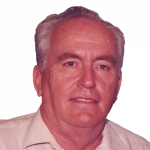
Chair
Ernest Berkman
Emerald Exploration Consultants, Inc., USA
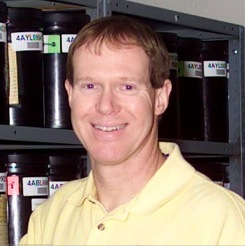
Co-Chair
John Faundeen
EROS Center, Sioux Falls, USA
